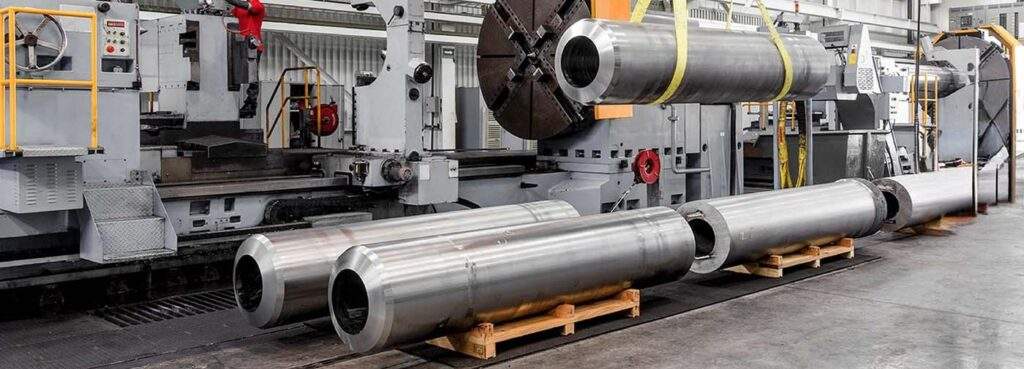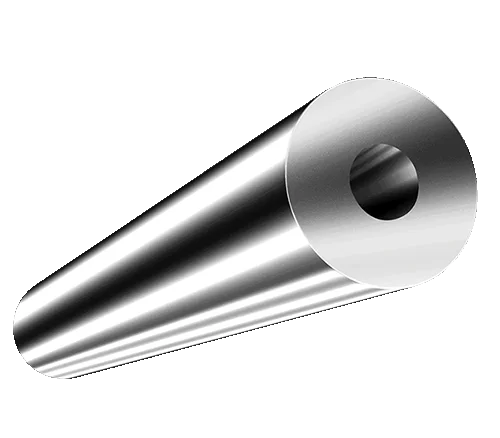Shandong Qilu lndustrial Co.,Ltd.
Exploring the Advantages of Large Hollow Tube Forgings in Modern Engineering
Introduction

In the realm of modern engineering, the utilization of large hollow tube forgings has garnered significant attention due to their unique properties and advantages over traditional solid forgings. This blog aims to delve into the various aspects of large hollow tube forging, exploring their applications, benefits, and considerations in engineering projects.
What are Large Hollow Tube Forgings?
Large hollow tube forgings are specialized components created through the forging process, designed with a hollow interior rather than being solid throughout. This structural design offers several distinct advantages in terms of weight reduction, material savings, and enhanced mechanical properties, making them ideal for critical applications in aerospace, automotive, and industrial sectors.
Applications in Modern Engineering
Large hollow tube forgings find extensive applications across diverse industries:
- Aerospace: In the aerospace industry, weight reduction is paramount for improving fuel efficiency and increasing payload capacity. Large hollow tube forgings are used in aircraft structures, such as wing spars and fuselage frames, where their lightweight yet strong characteristics help achieve these goals. For example, Boeing and Airbus utilize hollow forgings extensively in their latest aircraft models to achieve significant weight savings without compromising structural integrity.
- Automotive: In the automotive sector, where reducing vehicle weight directly translates to improved fuel economy and performance, large hollow tube forgings are employed in critical components such as suspension arms, drive shafts, and chassis structures. For instance, high-performance sports cars and electric vehicles benefit from the weight savings provided by hollow forgings, contributing to enhanced agility, acceleration, and overall efficiency.
- Industrial Machinery: Industrial applications often require robust and durable components that can withstand heavy loads and harsh environments. Large hollow tube forgings are integrated into machinery components such as crankshafts, gears, and hydraulic pistons, where their superior strength-to-weight ratio and resistance to fatigue ensure reliable operation and extended service life.
Advantages of Large Hollow Tube Forgings
Large hollow tube forgings offer several key advantages:
- Weight Reduction: Compared to solid forgings, large hollow tube forging significantly reduce overall weight while maintaining structural integrity. This weight reduction is crucial in applications where minimizing mass improves performance metrics such as fuel efficiency and operational agility.
- Material Savings: The hollow interior of these forgings allows for efficient material usage, leading to cost savings and reduced environmental impact. Manufacturers can achieve substantial material savings without compromising on component strength and reliability.
- Enhanced Mechanical Properties: Large hollow tube forging exhibit superior mechanical properties, including increased stiffness and fatigue resistance. These characteristics are particularly beneficial in applications where components are subjected to dynamic loads and harsh operating conditions, ensuring longevity and performance reliability.
Case Studies and Examples
To illustrate the practical benefits of large hollow tube forgings, consider the following case studies:
- Aircraft Wing Components: The adoption of large hollow tube forging in aircraft wing components has revolutionized aircraft design by enabling significant weight reductions. For instance, in the Boeing 787 Dreamliner, hollow forgings contribute to a 20% weight reduction in structural components compared to conventional designs, translating into substantial fuel savings over the aircraft’s lifetime.
- Automotive Suspension Systems: Hollow forgings play a critical role in enhancing automotive suspension systems by reducing unsprung mass. This reduction improves vehicle handling, ride comfort, and overall performance, as demonstrated in luxury vehicles and high-performance models where hollow suspension arms and drive shafts contribute to agile handling and responsive driving dynamics.
Design Considerations
When incorporating large hollow tube forgings into engineering designs, several factors must be considered:
- Structural Integrity: Design engineers must ensure that the wall thickness of hollow forgings is adequate to withstand operational loads and stresses. Finite element analysis (FEA) and rigorous testing are essential to validate the structural integrity and performance of these components.
- Manufacturability: The forging process for large hollow tube forging requires specialized equipment and expertise to achieve precise dimensions and mechanical properties. Advanced forging techniques, such as closed-die forging and precision machining, are employed to produce high-quality forgings with tight tolerances and optimal performance characteristics.
- Cost Efficiency: While initial manufacturing costs for large hollow tube forgings may be higher compared to traditional solid forgings, the long-term benefits in terms of weight savings, material efficiency, and operational performance often justify the investment. Cost-benefit analysis should consider both upfront expenses and ongoing operational savings over the component’s lifecycle.
Tables and Data

Below is a comparative table showcasing the weight savings achieved through large hollow tube forgings in various applications:
| Application | Weight Savings (%) |
|---|---|
| Aircraft Wing Components | 20 |
| Automotive Suspension Arms | 15 |
| Industrial Drive Shafts | 18 |
Conclusion
In conclusion, the adoption of large hollow tube forgings represents a significant advancement in modern engineering practices, offering substantial benefits in terms of weight reduction, material efficiency, and enhanced mechanical performance. As industries continue to push the boundaries of innovation, the versatility and advantages of large hollow tube forgings will undoubtedly play a pivotal role in shaping the future of engineering.
FAQ
Q:What are large hollow tube forgings?
A:Large hollow tube forgings are specialized components created through forging processes, featuring a hollow interior for enhanced performance and weight reduction.
Q:Where are large hollow tube forgings used?
A:They are used in aerospace, automotive, and industrial applications for components requiring high strength-to-weight ratios and superior mechanical properties.
Q:What are the advantages of large hollow tube forgings?
A:Advantages include weight reduction, material savings, and improved mechanical properties such as strength and stiffness.
Q:How are large hollow tube forgings manufactured?
A:They are typically manufactured through precision forging processes where metal is shaped into hollow forms using high-pressure forging dies.
